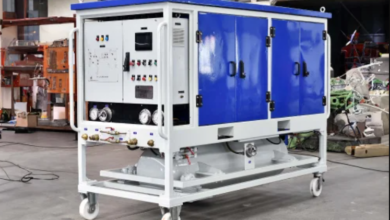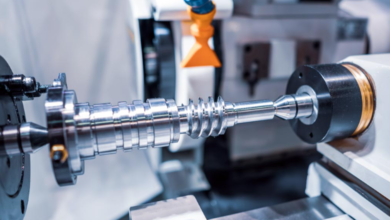To cost-cutting and increasing operational efficiency in the competitive business environment, purchasing management has come through as the key aspect of today. Reverse auction procurement is a new area of development in procurement strategies. This method provides substantial benefits for companies buying goods and services through robust procurement management tools that encourage competition among suppliers.
1. Understanding reverse auction procurement
In reverse auction procurement, suppliers compete to secure contracts by offering more competitive prices. Reverse auctions are different from traditional ones because they see buyers get better terms rather than higher prices offered by sellers as supply gets tighter making it possible to buy at lower prices or go for better quality or faster delivery times. It also means greater supplier options for buyers regarding costs, lead time, specifications, and quality among others as well as other non-price factors such as warranties and technical support.
Another benefit is that open and fair selection criteria can be implemented during the procurement process while securing bids from a broad range of prospective suppliers. In addition to this, equal opportunity gives vendors an incentive to stay relevant so that they continuously upgrade their products and provide clients with value-for-money purchases thus levelling the playing field. When all is said and done, the lively nature of a reverse auction empowers buyers to achieve better bargaining terms as well as best results in their procurement undertakings.
2. Leveraging technology for procurement management
It is important to have a procurement management tool as an essential element of the implementation process of reverse auction purchasing. These tools unite supplier selection and contract management into one e-procurement lifecycle, with centralized control and visibility across the entire process. Other advanced aspects contained in these systems include automated bid evaluation, supplier performance tracking, and contract compliance monitoring that enhance efficiency and decision-making.
To standardize processes and enforce best practices for consistency as well as compliance across procurement activities, organizations use procurement management tools. By introducing predetermined workflows and approval mechanisms, they cut down on manual mistakes while streamlining administrative tasks so that other strategic duties can be taken up more quickly. Additionally, real-time insight and analytics produced by such tools give stakeholders actionable intelligence. For procurement professionals to optimize sourcing strategies and drive cost savings, they can spot bottlenecks, trace key performance indicators, and make data-driven decisions by accessing dashboards and reports.
See also: Numbers: the Story Behind Vehicle Numbers
3. Improving supplier relationships
However, reverse auction procurement seeks to prioritize cost reductions while offering opportunities for strengthening supplier relations. For instance, creating an atmosphere of honest communication and fair competition among the members of the organization will result in trustworthiness and mutual esteem with their suppliers. On top of that, e-procurement platforms empower buyers to engage suppliers more effectively via a feedback loop which is established within the system.
In addition, strong supplier relationships breed innovation as well as value generation. Companies can draw on the expertise and capabilities of suppliers to facilitate product development and process improvement if they are included at this early stage in the procurement process. The goods and services become better and a culture of partnership and innovation prevails when organizations adopt such an approach.
4. Optimizing sourcing decisions
The major advantage of Reverse Auction Procurement is its ability to enhance informed decision-making in sourcing. Organizations can be able to recognize trends, evaluate supplier capabilities and manage risks by analysing bid data and supplier metrics. This data-driven approach enables procurement professionals to make strategic decisions that are in line with the goals of their organizations – these may involve; reducing costs, mitigating supply chain disruptions or improving product quality.
Furthermore, reverse auctioning offers an opportunity for suppliers to compete among themselves hence demanding reasonable prices and offering creative solutions. Not only does this facilitate cost reduction but also enhances supplier accountability as well as performance excellence. Moreover, visibility into market dynamics allows companies to anticipate changes in demand, price fluctuations and emerging risks leading to proactive strategies for risk mitigation.
5. Ensuring compliance and transparency
Compliance and transparency are vital practices in the procurement process due to increased regulations in the business environment today. A comprehensive procurement management tool serves as a framework for compliance with internal policies as well as regulatory requirements which is mandatory. Accountable sourcing activities are possible through audit trails, and document management applications alongside real-time reporting features on any comprehensive e-procurement system that can demonstrate integrity along with transparency which must be maintained by any organization.
Besides increasing business ethics, this transparency builds long-term relationships based on trust and honesty. Furthermore, automating the processes related to compliance using technology minimizes manual errors while streamlining regulatory reporting. Consequently, this enables proactive risk management besides facilitating timely decision-making through easy access and analysis of centralized procurement data and documentation. Finally, a culture of compliance and transparency serves as the bedrock for procurement operations which are essential for sustainable growth and ethical business practices.
6. Driving continuous improvement
Continuous improvement is a cornerstone for excellence in procurement practices. Procurement management tool has come up with reverse auction procurement insights that when combined can assist organizations to identify areas that demand optimization as well as innovation. Enhancing sourcing tactics, refining supplier relationships or adopting best practices are all crucial in promoting procurement agility and resilience.
Still, the acceptance of a continual improvement culture is a way of life that entails proactive risk management and adaptation to shifts in market forces. Therefore, organizations should maintain their ability to respond swiftly to changing business needs by obtaining feedback from stakeholders, watching industry trends as well as comparing with what other industries are doing better. This method has been praised for boosting efficiency, and affordability as well as guaranteeing innovation as well as competitive advantage within the marketplace. In summary, continuous improvement is more than just a process; it is an attitude towards organizational excellence and sustainable success in procurement management.
Finally, it can be highlighted that the reverse auction procurement tool assisted by an advanced procurement management system is a strategic option for organizations when purchasing supplies. By utilizing market competition, integrating technology, and partnering with suppliers, businesses can attain cost reduction, improved operational efficiency, and sustainable growth. Such innovative procurement strategy forms the basis on which companies can navigate the intricacies of global supply chain networks while competing in the marketplace.





